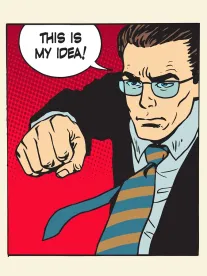On Monday, March 4, 2019, the United States Supreme Court issued an opinion that clarified the long-standing issue of whether a plaintiff bringing a copyright infringement action has to have an issued registration or just a pending application. Justice Ginsburg, writing for a unanimous court, sided with the “registration approach,” which requires a litigant to have an issued registration, or a rejected application, subject to certain limited exceptions. For decades, copyright owners and their attorneys faced a patch-work of circuit and district court decisions that required either (i) an issued registration to institute an infringement action or (ii) merely have made an application to register the work(s) at issue. This decision provides certainty going forward.
In Fourth Estate Public Benefit Corp. v. Wall-Street.com, LLC, No. 17-571, the copyright owner Fourth Estate sued Wall-Street for use of news articles after a licensing agreement between the parties was terminated. Fourth Estate sued Wall-Street and its owner after it applied to register for copyright registrations for the news articles at issue but before any registrations issued. The District Court dismissed the action on defendants’ motion, the Eleventh Circuit affirmed, and the Supreme Court affirmed.
Under the Copyright Act of 1976, as amended, copyright protection attaches to “original works of authorship”— prominent among them, literary, musical, and dramatic works—“fixed in any tangible medium of expression.” 17 U.S.C. § 102(a). Before pursuing a claim for infringement, a copyright owner must comply with § 411(a)’s requirement that “registration of the copyright claim has been made.” Although rights exist before registration, the registration is a requirement that must be administratively exhausted before filing suit. An owner therefore must have an issued registration or a refusal to register from the Copyright Office. The Supreme Court referred to this as “an administrative exhaustion requirement.”
Limited exceptions apply. For example, for works that are particularly vulnerable to predistribution infringement, such as movies or musical compositions, an owner may apply for “preregistration” in which the Copyright Office conducts a limit review. Once a work is “preregistered” the owner may bring suit. However, the owner must also go on and fully register the work thereafter to maintain the action. Another exception covers live broadcasts. Suit may be brought before registration but must be made within three months of the first transmission.
For owners of copyright protected works, the take-away lesson from this decision is to register more of the works that could be subject to infringement. Strategies for protecting works, such as furniture, apparel, and musical works, have become more nuanced and strategic in recent years.





 />i
/>i

